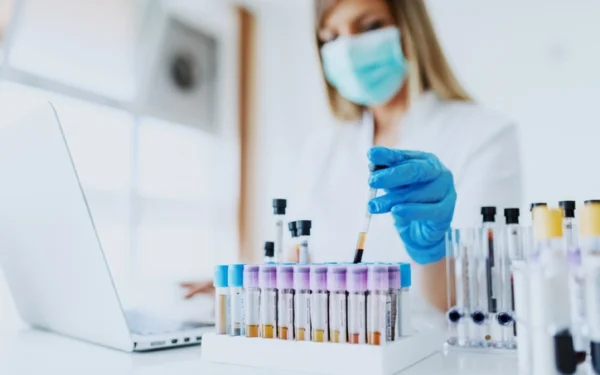A modern cloud-based Electronic Laboratory Notebook software is a game-changer for any laboratory looking to elevate its workflow and enhance data accessibility. Imagine having all your laboratory data, from samples and experiments to workflows and notes, in one seamless platform accessible to all scientists at the touch of a button. This is laboratory management’s future, starting with modern ELN software integrated with a Laboratory Information Management System (LIMS).
1. A Single, No-Code Platform
Gone are the days of clunky, separate systems for sample management, materials management workflow automation, experiment templates, instrument data results and interpretation. A modern lab notebook software should be integrated with LIMS, allowing for a seamless experience that connects all aspects of laboratory management in one platform. This eliminates the need for separate logins, training, and data transfer, saving time and money while boosting team collaboration.
2. Easy-to-Use User Interface
Modern ELN software should have an easy-to-use SaaS user interface, allowing laboratory staff to navigate and find the information they need quickly. This eliminates the need for extensive training, saving time and money while increasing productivity.
3. Experiment Templates
Reusable, editable experiment templates are a crucial electronic notebook feature. This allows laboratory staff to quickly set up experiments and ensure all necessary information is captured, saving time and reducing the risk of errors. It also makes it easier for scientists to replicate experiments and compare results.
4. Embedded Sheets and Documents
Embedded MS Office-compatible sheets and documents are a must-have feature of modern laboratory notebook software. This allows laboratory staff to easily create and edit documents, such as spreadsheets, within the ELN, without switching between different software programs. This saves time and improves productivity while ensuring all relevant data is captured and stored within the ELN software.
5. Notebook and Note Taking
A notebook and free-form note-taking are essential ELN features. This allows laboratory staff to take notes naturally, free-form, rather than constrained by predefined fields. This is especially useful for capturing observations and insights that may not fit into predefined fields while making it easier for scientists to share information and collaborate. Ideally, you can talk to the ELN, which will transcribe your notes.
6. Built-In Apps & Visualizations
Built-in science-aware functions, such as tools for designing molecules, reactions, plasmids, or finding CRISPR targets, are valuable to lab notebook software. ELN’s should have built-in analytics that are productivity accelerators, such as flow cytometry data analysis and scientific charts and stats like IC50, etc. These functions can save time and improve accuracy, making it easier for scientists to understand, search, analyze, and visualize data.
7. E-Signatures
Document e-signatures are an important ELN feature that can ensure that all experiments, data, and documents are properly reviewed and approved. This is especially important for laboratories that are regulated or that need to follow specific protocols, as well as for patent protection in an R&D environment.
8. Materials Management
Material registration, tracking, and management are critical electronic notebook features. This allows laboratory staff to easily track samples, compounds, proteins, reactants, and reagents, saving time and reducing the risk of errors.
9. Instrument Integration
Instrument results transformed into structured data is an important ELN feature. This allows laboratory staff to easily control instruments and then import and analyze data output from instruments, ensuring it has scientific context alongside other data in the system. This saves time and improves data accuracy.
10. Scientific Data Management System
Finally, a Scientific Data Management System (SDMS) with pre-built integrations to instruments and third-party systems is a must-have notebook feature. This allows laboratory staff to easily integrate scientific data, including documents, images, and instrument output. Tools should then be provided for easily navigating and finding data and then visualizing or analyzing it quickly.
So there you have it, the top 10 electronic laboratory notebook features. With so many features available, it can be challenging to cover them all in this one article, but we hope you found them helpful.





